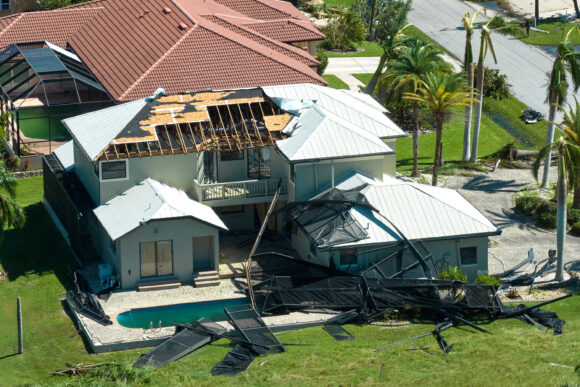State laws adopted in 2022 and 2023 may have stemmed excessive claims litigation in Florida, helping to stabilize the distressed property insurance market and slow rate increases. But premiums, which have doubled for some homeowners in recent years, are unlikely to drop.
That’s the word from Karen Clark & Co., a respected catastrophe modeling firm, which released a report this week.
“Already enacted legislation should have a major impact on excess litigation in Florida, and therefore, significantly mitigate future premium increases,” reads the report. “In other words, without the recent legislation, Florida homeowners premiums would be higher.”
But due to factors outside Florida lawmakers’ control, including frequent named storms and rising replacement costs, some of the highest property premiums in the country are here to stay.

“The Florida Legislature cannot control the hurricane and severe weather risk any more than it can control the ever-increasing costs of construction,” Karen Clark noted. “These factors will continue to influence future homeowners premiums, and it is unlikely these costs will go down.”
The cost of construction in Florida has jumped by nearly 40% since 2017. And Florida will continue to be disproportionately affected by climate change and sea level rise, the report concluded. “The only ways to significantly mitigate these impacts are more stringent building codes, retrofitting existing properties, and land-use planning.”
The prediction is not unexpected. Paul Handerhan, longtime president of the Federal Association for Insurance Reform, a Florida advocacy group, said in a town hall meeting in July that, despite the reform legislation that ended one-way attorney fees, insurance rates won’t drop.
“I don’t foresee a future where reinsurance rates or primary insurance rates dramatically dip,” he said. “I do think we’re going to get to a period where the market kind of stabilizes over the next year or two. But the amount you’re paying right now is probably going to be pretty consistent with what you’ll continue to pay in the future.”
The Karen Clark report noted that other factors impact rates, including reinsurance costs, which are based on reinsurers’ own appetites, not on computer models.
“Anyone under the misconception that reinsurers base pricing on the models need only witness the recent 50 to 100 percent price increases that were clearly not indicated by the models,” KCC wrote.
At the Monte Carlo Rendez-Vous last month, executives of some of the leading reinsurers “warned insurers in cat-prone areas that property reinsurance rates will not go down in 2024, and future increases should be expected. Reasons cited include increasing risk, reinsurer loss history, and heightened inflation.”
The Florida reform legislation, which also ended assignments of benefits on property claims and made it more difficult to sue insurance companies, is having an impact on insurers’ loss adjustment expenses, KCC noted. For hurricanes in recent years, for example, the percentage of claims that were litigated in Florida was 10 times the percentage seen after storms in other states. Litigated claims are, on average, about seven times more costly than non-litigated claims, the report noted.
Claims for Hurricanes Irma and Michael in Florida (2017 and 2018) were 30% to 50% higher than they would have been without the excess litigation, the report found. But after the 2022 and 2023 legislative changes, KCC’s newer hurricane models factor in only 15% higher costs due to litigation.
“This factor is much lower than what is indicated by the data from Irma and Michael because it is assumed that recent legislative reforms will significantly reduce excess litigation,” the report said.
The KCC report can be downloaded here.
Topics Florida
Was this article valuable?
Here are more articles you may enjoy.



 Brown & Brown Files Suit Over Alleged Howden Poaching of 200+ Employees
Brown & Brown Files Suit Over Alleged Howden Poaching of 200+ Employees  Former CEO of Nonprofit P/C Statistical Agent Sentenced for Stealing Millions
Former CEO of Nonprofit P/C Statistical Agent Sentenced for Stealing Millions  Underwriter, Actuary Fears of AI Drop; Work Needed on Collaboration
Underwriter, Actuary Fears of AI Drop; Work Needed on Collaboration  Grand Jury Declines to Indict Man in Fatal Shooting at Kentucky State University
Grand Jury Declines to Indict Man in Fatal Shooting at Kentucky State University 

